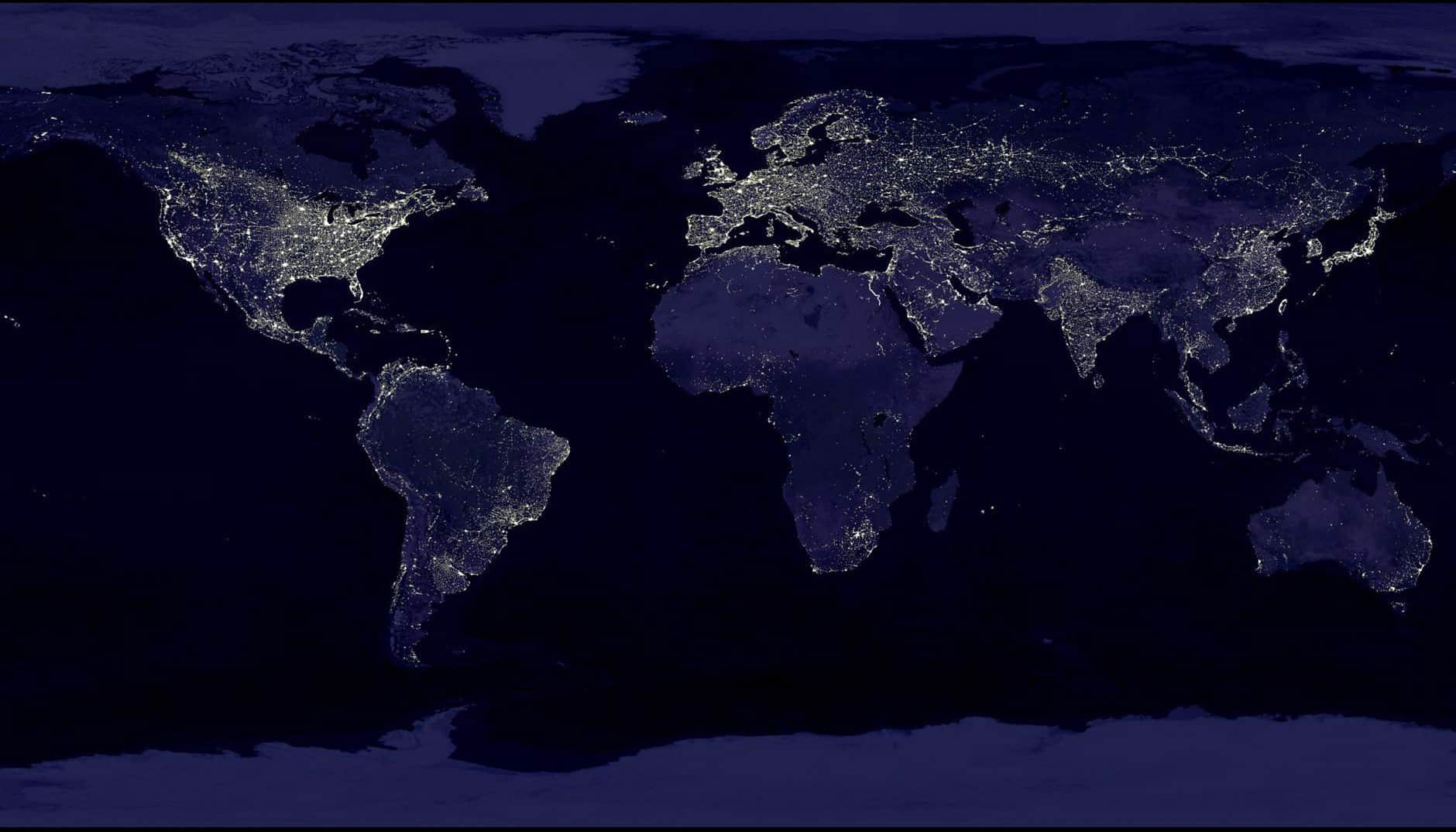
One can measure energy across a variety of different scales. For example, power is the rate of energy production or the rate of energy consumption, which is measured in watts (W). Overall U.S. power consumption totals around 3.34 × 1012 W, or 3.34 terawatts (TW), compared to 17.5 TW globally. About 10,000 times more energy shines on Earth every day than is needed to power all of humanity.
As earlier established, more affluent countries tend to use more energy. A photographic map of the world at night reveals this relationship clearly. Lights shine in the night where there is a robust infrastructure for electricity, and the map of wealth lines up closely with the map of electricity. The Nile River Valley stands out in the darkness of the surrounding arid landscape, as the Eastern Seaboard of the United States appears bright between the Atlantic Ocean and rural Appalachia. North Korea, which is poor and authoritarian, is dark in contrast with South Korea, which is wealthy and free. Because energy is so cross-cutting, energy options that simultaneously encourage a robust economy and protect the environment without undermining national security are preferred.

The solutions to our problems are both technical and cultural, and they are key to a sustainable future. Each energy technology and option has benefits and risks. Thus, as we evaluate options for fuels and technologies for the future, we must keep tradeoffs and technology trends in mind.
Image Credits: SPF/Shutterstock.com; NASA Earth Observatory/NOAA NGDC.
Update your browser to view this website correctly.Update my browser now